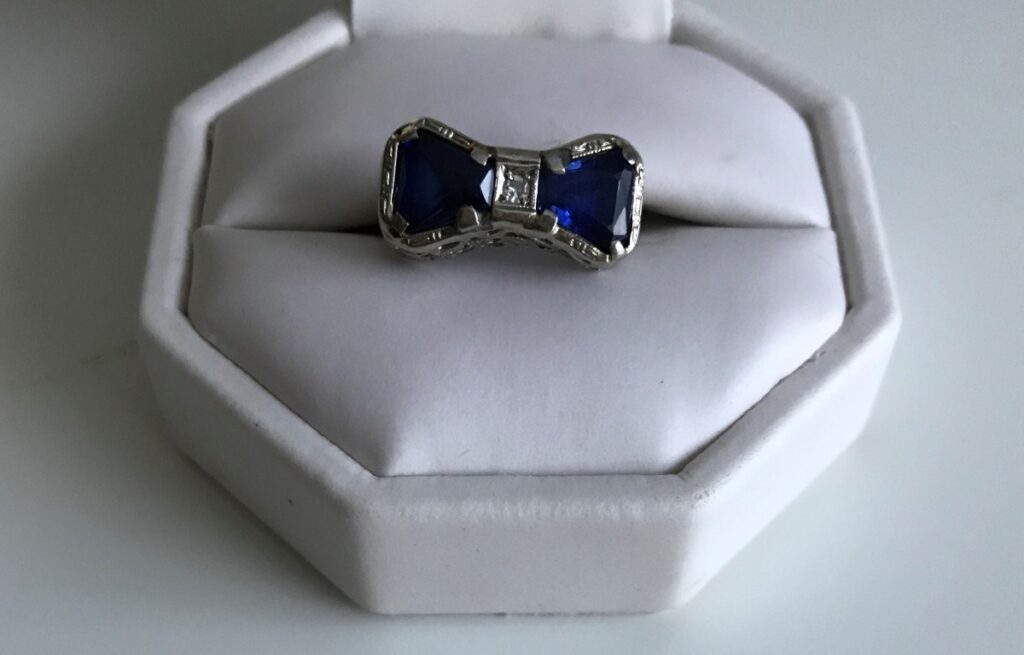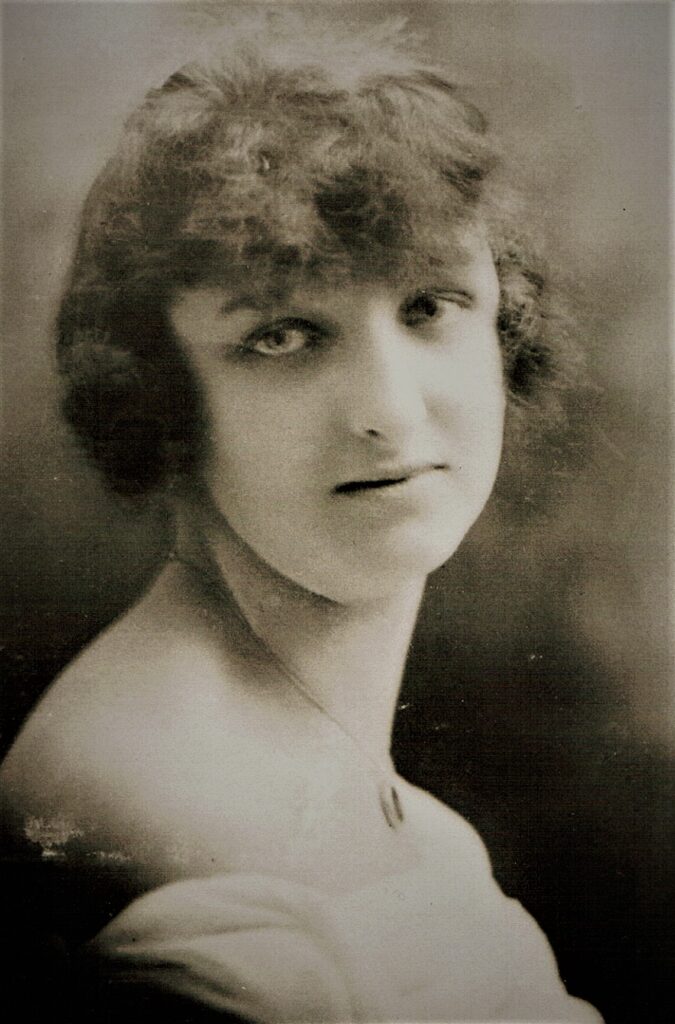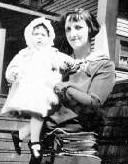
In this three-part series, I’m peering down my maternal line, inspired by my mother’s sapphire ring and the qualities that this blue stone has been credited with for centuries. I’m searching the lives of my mother, grandmother and great-grandmother for sapphire qualities: power, strength, kindness and wise judgement, as well as the bringing of protection, good fortune and spiritual insight.
Part One looks at Josephine Robinson McSorley, my great-grandmother. Today I’m reflecting about:
My grandmother: Mary Margaret McSorley Granger (1900-1977)
To me, she was “Mimi,” the grandmother who took care of me, my sister and brother on the rare occasions my parents were away; the one whose house my sister and I went to every summer for a week (a big trip from Niagara Falls to St. Catharines, once on the train!); and the one who let us have “sugar in the bowl”: a wicked sprinkle of brown sugar on the bottom of our cereal bowls, covered with milk when we’d finished our breakfast.

I know little about her childhood. She apparently didn’t talk much about it to anyone, except to speak about her father, who, she said, “had the wanderlust.” Surely his absence shaped her character, as did the financial struggles her mother endured while he was away, but I can only speculate about this. What I do know is that Mary McSorley came of age in the decade known as the “roaring twenties,” in a city – Buffalo, New York – that was one of the largest industrial cities in the country, and home to more millionaires per capita than any other in America.
Mary belonged to the era when women won the right to vote and hold office, and when fashion reflected dizzying transformations in social customs for women. Every article of women’s clothing was trimmed down and lightened, waistlines dropped, hemlines rose, and long, lush hairstyles gave way to short, cropped bobs. Despite prohibition laws, little hip flasks were all the rage, and Mary drank whiskey and smoked cigarettes and wore makeup.

Her son Robert, my Uncle Bob, tells this story about Mary, a story that must have come from her or my grandfather:
Mother was the one who actually took a shotgun away from somebody at a party and then went into a bedroom and found an opening and dropped it down in between the wall joists. It’s probably still in there and somebody’s going to knock that house down and wonder how the shotgun got there. That was in Buffalo.
That was some sapphire power and strength!
She married my grandfather Stephen Granger in 1923, skipping town with only their two best friends along as witnesses. Their marriage certificate is full of lies, the biggest one being that this was Stephen’s first marriage. It was not; his first wife was still alive and according to New York State law, it was only sometime after 1925 that he would be allowed to petition the court for permission to re-marry.
Which means my grandparents entered willingly and deceptively into a marriage that was not legal. I believe they simply did not want to wait – and I’ll mention here that they remained childless for six years; this was no “shotgun” wedding. It was, however, a great love match. From all accounts they were very devoted to each other until death did them part in 1960.
The way I look at it, Mary’s ability to love fiercely and defiantly is another facet of her sapphire-style strength.
Speaking of defiance, Mary was employed as a telephone operator at AT&T at the time of her marriage, and back then, women had to quit their jobs when they got married. Does it surprise you to know she withheld the fact of her marriage from her employer?
Mary was known for her cooking and pastry skills, for entertaining, for her sense of humour. My father once said he only ever remembered her smiling. Uncle Bob describes her as loving, funny, quick-tempered… and kind, another sapphire quality. Here’s a story about his mother that stands out in Bob’s mind:
Black Bridge was part of the old Welland Canal, a railway bridge that ran over it. There was no water running in that canal in the forties; it had long been filled in. Kids hung out there, and so did the so-called rubbies or street bums. During the war years and just after, when jobs were not plentiful for people, somehow word got out among the unemployed that if they came to the Granger house on Norwood Street, they could usually get a piece of Mother’s pie or a pork sandwich.
Mary McSorley Granger: powerful, strong, kind. She’s one of my sapphire women!
I love this story of a female in her time. Just like I loved your book. Fantastic research into your family background. It is amazing the detail that you discover when searching out your family background.
What a wonderful story! It would be fun to see what Her mother did.
Lovely gret story Lee Ann.
Wish I could have tasted her pie. She sounds like a formidable woman who managed to live a fabulous, happy life. I’m so glad you got a chance to know her well!
What a strong woman, an inspiration to follow of just how different times for women were not too long ago. Thank you Lee Ann for sharing this beautiful story about your grandmother.